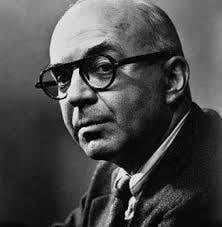The John Dos Passos Cultural Center joins today, September 28, 2020, to so many other institutions around the world dedicated to the study and dissemination of this writer, who gave his name to this Center, in the fiftieth anniversary of the disappearance of John Roderigo Dos Passos, one of the most prolific novelists of the so-called 'Lost Generation' (Lost Generation), a term coined by Gertrude Stein and popularized by Hemingway, another contemporary of his.
Born on January 14, 1896 in Chicago, Illinois, in the United States, grandson of a Madeiran emigrant with origins in Ponta do Sol, he became known, above all, for his USA trilogy, which earned him a reputation as a social historian and radical critic of the American way of life, despite the undoubted value of his work as a whole.
Graduated from Harvard in 1916, he traveled through many writers of his generation, having volunteered in Europe during the First World War as an ambulance driver to serve France in Norton-Harjes. This experience, and the inherent shock of depriving up close with a cruel and violent world, is reflected in his early works, namely in his bitter anti-war novel Three Soldiers (1921).
His frequent trips to Europe, namely Spain, and to other countries as a correspondent in the post-war years, allowed him a broader historical sense and sharpened his social perception. They also led, at this stage in their life, to the confirmation of their sympathies with a more radical vein.
His next literary success, the Manhattan Transfer novel (1925), confirms his transition from initial subjectivism to a broader and more objective realism. In a modernist narrative technique, which would become even more pronounced in the USA trilogy, through which the lives of more than a dozen characters parade, between oscillations and impressionistic features, the work conveys a look of a Manhattan that is merciless but, at the same time, full of life and restlessness.
In the U.S.A. trilogy composed by The 42nd Parallel (1930), covering the period from 1900 until the First World War; 1919 (1932), with the years of war until the critical year of the Treaty of Versailles; and, finally, The Big Money (1936), which travels quickly from the end of the 1920s until the 1930s debacle, Dos Passos offers a portrait of a divided country, of the United States of America as “two nations”. Upstream to this look at his country is an event that deeply affected him - the execution of the alleged anarchists Sacco and Vanzetti in 1927. He himself had participated in the inglorious battle of trying to obtain his forgiveness and saw, thus, this divided country confirmed - the rich and privileged, the poor and powerless. In a mixture of techniques that involve brief and poetic personal reminiscences (the so-called “camera-eye” technique), with well-made montages of newspaper headlines and popular songs of the time (the well-known newsreels), which give the feeling of historical verisimilitude to the stories of their children. Fictional characters, introduces, still and in a dispersed way, biographies of representatives of these same two nations: on the one hand, President Woodrow Wilson, the automobile industry representative, Henry Ford, the inventor Thomas Edison and the financier JP Morgan; on the other, economist Thorstein Veblen, socialist Eugene V. Debs, unionist Joe Hill and the unknown soldier of the First World War.
This trilogy was followed by another, the District of Columbia (comprising Adventures of a Young Man (1939), Number One (1943) and The Grand Design (1949)). It is less ambitious than U.S.A. and shows the growing disillusionment with radical politics, the workers movement and New Deal liberalism.
Dos Passos wrote and published numerous other titles. In terms of dramatic text, in 1934 he published Three Plays, which, as the name implies, contains three pieces - The Garbage Man, Airways, Inc. and Fortune Heights. He also adapted, with Paul Shyre, his USA, which resulted in the dramatic text USA: A Dramatic Revue (1959), which debuted on the Martinique Theater stage for the first time, in New York City, on October 28, 1959, and had another 256 sessions. With only three actors and three actresses, taking turns in thirty-one different characters in a naked setting and raw light, he brought his renowned U.S.A. trilogy to life on stage.
He was also responsible for the script for the film The Devil is a Woman (1935), by Josef von Sternberg, with Marlene Dietrich in the main role, adaptation of Pierre Louÿs' 1898 novel, La Femme et le Pantin.
He was also a painter, having carried out exhibitions and illustrated the covers of some of the first editions of his works.
In 1957, he received the Gold Medal in the Fiction category at the joint annual ceremony of the American Academy and the National Institute of Arts and Letters.
Over the years, it has become progressively more conservative from a political point of view which has also helped to make it receive less and less critical attention. He died at the age of 74, on September 28, 1970, in Baltimore, Maryland.
Text: Bernardo de Vasconcelos
John Dos Passos book and glasses



